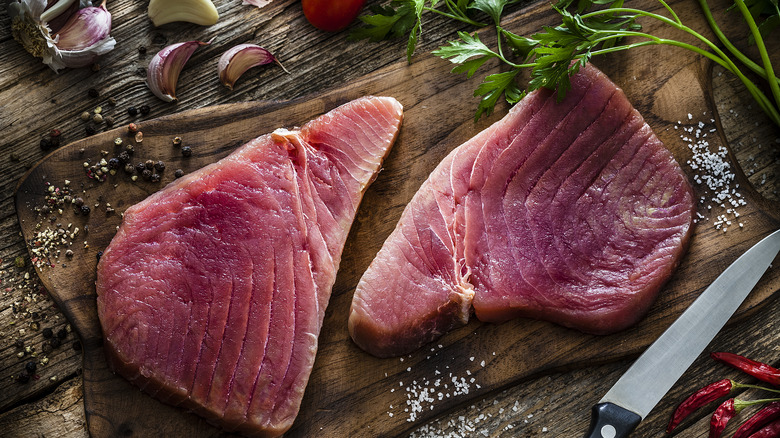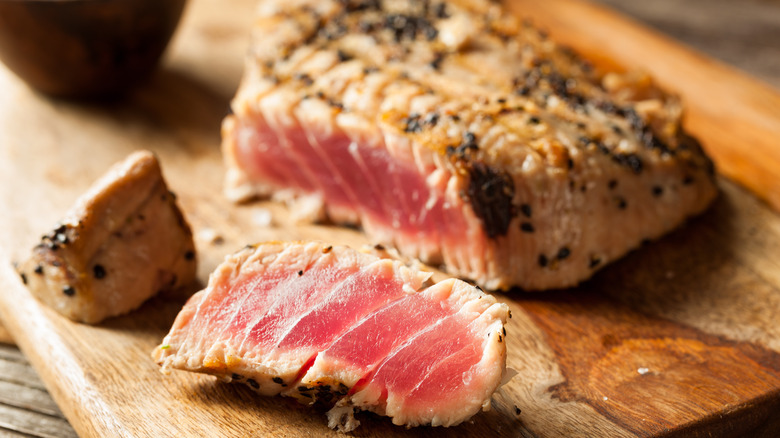What's The Best Temperature To Cook Tuna Steak, Really?
Plenty of home cooks have been there: You pick up a beautiful piece of tuna at the seafood counter — a hearty slab of steak as deep crimson as a crown jewel — knowing that all you need is some salt, pepper, and heat to turn it into a quick dinner. Those entry-level seasonings are easy enough to portion to taste, but figuring out just how much heat is required to make your fish sing without searing it beyond the point of recognition can be a little trickier.
The U.S. Food and Drug Administration urges that tuna and all finfish should be cooked to at least 145 degrees Fahrenheit. That's the best temperature to begin staving off the risk of foodborne illnesses. It is, however, not accounting for preferred levels of doneness, or the lower temperatures required to achieve the peak tuna texture the federal government might rather you eschew. It's also part of the reason restaurant menus include those familiar little disclaimers about certain raw or undercooked foods. Still, the consensus in professional kitchens all over the world is that fire is to a tuna steak as vermouth is to a martini: A little bit goes a long way. The most delicious tuna temperatures are going to clock in cooler, leading to a more rare finish.
What's the ideal temperature for rare, medium, and well-done tuna steak?
Once you've heeded any cautionary target numbers — and maybe even cast caution aside like yesterday's catch — you only need to memorize a few other ideal temperatures for the tastiest tuna to suit your palate. These temperatures are appropriate for a myriad of preparation methods and sundry recipes with equal aplomb.
After a fair amount of trial and error and intimate acquaintance with your kitchen appliances (or your new outdoor grill), it'll be easy to eyeball and guesstimate the fish's desired finish with fairly consistent levels of accuracy. Absent that mastery, a food thermometer is clutch. The best tuna steak should be around 90 degrees Fahrenheit for very rare and 130 degrees Fahrenheit for medium-rare. If you increase the FDA's recommended 145 degrees Fahrenheit, you'll approach well-done and beyond. This increases dryness and saps flavor, typically reducing some of the risks of consuming undercooked fish.

